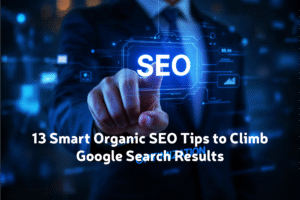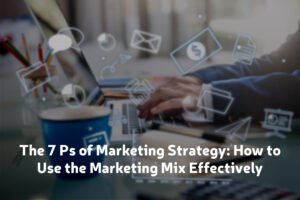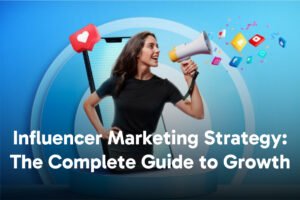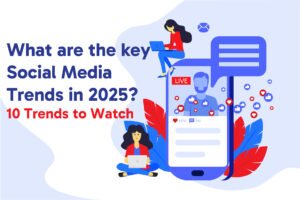Nowadays, the online world is rapidly growing; people trust people more than brands. Furthermore, people want more genuine reviews. A single photo, review, or video from a customer can speak louder than a polished or paid ad. That is the power of user-generated content.
Brands across different industries now depend on their customers to create stories for them. It’s real, it’s emotional, and it often performs better than traditional campaigns. But the question is, what makes some user content stand out? And how can you use it in your own marketing?
In this blog, we’ll explore 5 real user-generated content examples that show the strength of UGC. You’ll also learn why it works, how to share it on your site and social channels, and which platforms help you manage it best.
What Is User-Generated Content?
User-generated content (UGC) refers to any type of content created by customers or fans, rather than by the brand itself. It could be:
- Photos and videos
- Product reviews
- Testimonials
- Blog posts
- Social media stories
- Even memes
The magic of UGC is simple: it feels authentic. When someone buys a product and shares their experience, it creates trust that no paid campaign can match.
Why UGC Works in Digital Marketing
Before we jump into examples, let’s look at why UGC is so powerful in digital marketing:
- Trust factor: People trust others.
- Low cost: Customers create content for free.
- Community building: Sharing UGC makes customers feel valued.
- Boosted engagement: Social platforms love authentic posts.
- Conversions: Witnessing real experiences helps people make decisions faster.
That’s why many businesses, from startups to established brands, are developing strategies centered on UGC digital marketing.
5 Great Examples of User-Generated Content
1. Starbucks #RedCupContest
Using the hashtag #RedCupContest, Starbucks encourages its customers to spend their holiday red cups and share photos online every year. The result? There are plenty of creative ideas on Twitter and Instagram.
Because it allows followers to influence the brand’s festive feel, this ad is successful. Starbucks sells community moments in addition to coffee. Starbucks transforms a common paper cup into a social custom by allowing consumers to design the images.
2. GoPro Adventure Videos
GoPro’s entire marketing model is built on UGC. Customers film their adventures—from skydiving to surfing—using GoPro cameras and share them online. GoPro then highlights the best clips on its own channels.
This is one of the best examples of user-generated content because it shows the product in action, straight from the customer’s hands. Instead of telling people “our camera is amazing,” GoPro lets users prove it.
3. Coca-Cola’s “Share a Coke”
Coca-Cola asked followers to locate their identities, snap a picture of themselves, and post it online by substituting their names for the company’s logo. The concept became a cultural phenomenon and expanded around the world.
This is UGC at its finest: the product itself inspired people to share content. Coca-Cola didn’t need to push—it simply invited people to participate.
4. Glossier’s Beauty Community
The beauty company Glossier focuses on client testimonials and images. Actually, fans provide a large portion of its Instagram material. Customers show how they use products, and Glossier reshapes those posts into campaigns.
The reason this works is clear: beauty shoppers want to see products on real people, not just models. By leaning on UGC, Glossier builds both trust and sales.
5. Airbnb Guest Photos
Photos taken by visitors from all across the world are featured on Airbnb. These authentic photos, taken in everything from downtown apartments to quaint cottages, tell tales that advertisements can’t.
Airbnb is based on actual travelers’ experiences rather than glossy magazine-style images. As a result, their listings seem more genuine and intimate.
Using UGC on Your Website
If you’re wondering how to bring these ideas into your own business, start with your website. Adding UGC on your website can boost trust and conversions. A website filled with real voices creates a living community space.
- Add a customer review section.
- Show Instagram feeds with customer posts.
- Highlight video testimonials.
- Feature fan stories in your blog.
Sharing UGC on Social Media
Social media is the ideal platform for user-generated content. The more you showcase fans, the more they’ll create for you. It’s a loop of trust and engagement. Here are some pointers for sharing user-generated content on social media:
- Always gives the creator credit.
- Use branded hashtags.
- Turn UGC into stories, reels, or carousels.
- Encourage participation with contests.
The Best UGC Platforms
Managing UGC can get tricky when your brand grows. That’s where the best UGC platforms help. These tools save time, keep everything organized, and help you use customer content legally.
Some popular ones include:
- Yotpo: Great for reviews and ratings.
- TINT: Helps collect and display social content.
- Bazaarvoice: Focused on retail UGC.
- Taggbox: Good for social walls and website embeds.
UGC Content Creators
A growing trend is UGC content creators—individuals who make authentic brand content without being influencers. They don’t need millions of followers; they just create relatable posts.
Many brands now hire UGC creators to produce content that feels natural and “customer-first.” It’s a bridge between influencer marketing and traditional advertising, providing brands with authentic voices at scale.
A Fresh Look: UGC as a Two-Way Relationship
Most blogs discuss UGC as if it’s solely about brands using content from customers. But there’s another side—it’s also about giving back.
You understand this with an example: when a customer shares something about your product, it’s their time, effort, and creativity that are being invested. Brands that win with UGC don’t just repost. They respond, celebrate, and even reward.
This two-way relationship builds loyalty. Customers feel seen, not used. And that emotional bond is the secret ingredient most marketing campaigns miss.
Conclusion
All 5 examples we discussed above show that user-generated content is a basic necessity. You can start planning how the UGC plan can fit into your strategy, whether you are a business owner or work with another digital marketing agency. Furthermore, there are endless opportunities from social media to websites.
Frequently Asked Question (FAQ’s)
What is an example of user-generated content in UGC?
It includes genuine customer reviews, social media posts, testimonials, photos, videos, and blog posts. There are many UGC campaigns that we can take as examples, such as those from Coca-Cola, iPhone, and Sephora Beauty, which create content to build trust.
What is the most successful UGC?
Customer-generated content is one of the most effective types of user-generated content. According to a local survey, we find that most people trust personal recommendations, such as those from family and friends.
What is the best AI UGC content creator?
Trend.io, Incense, Billo, Synthesia, Heygen, Shuttlerock, and Pencil are among the top AI UGC content creators.
How many followers do you need to be a UGC creator?
No, it doesn’t need followers; it’s here to create user-generated content style content that brands can utilize.
What is the easiest subject in UGC NET?
Education, sociology, and psychology are the topics that are easily handled.










